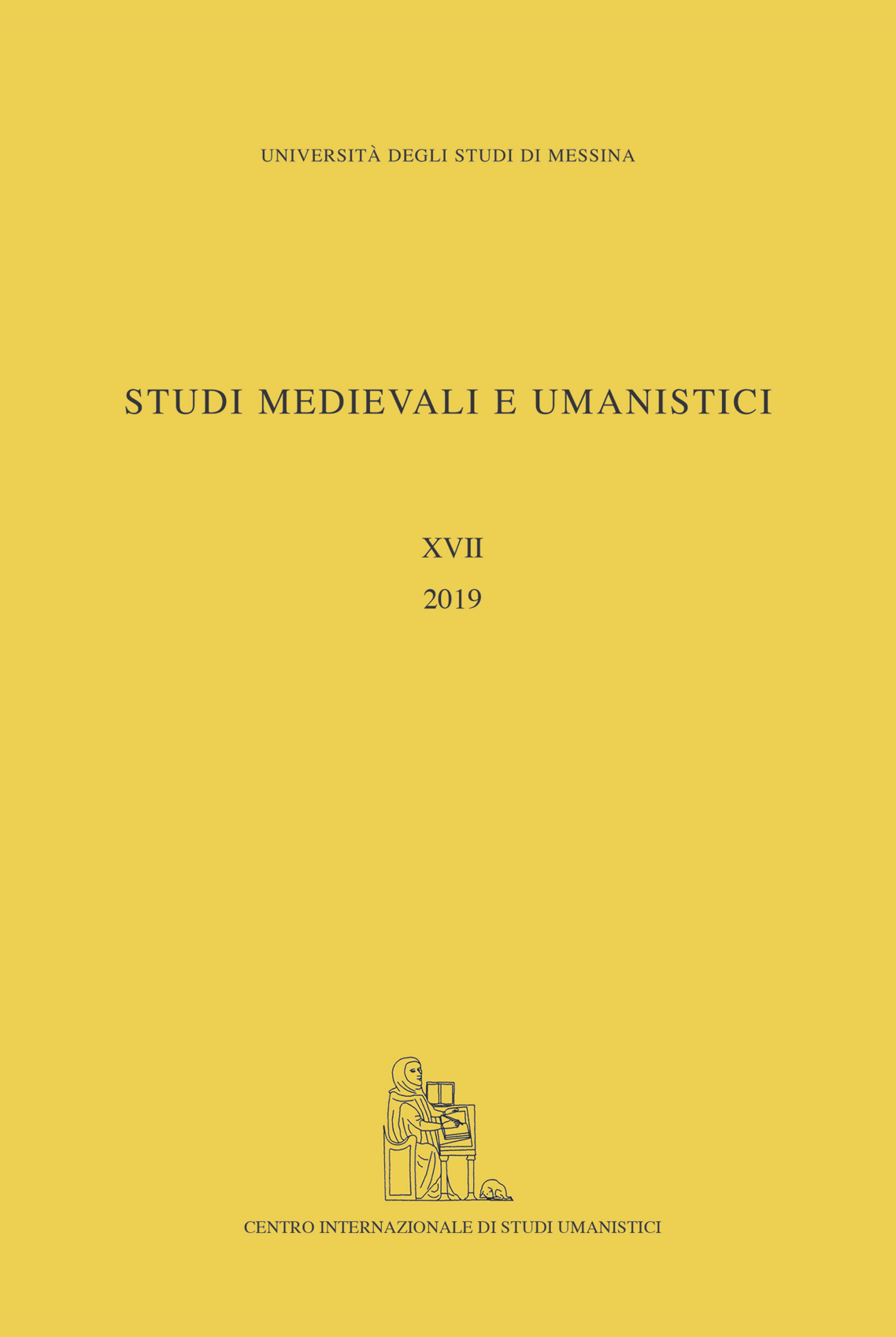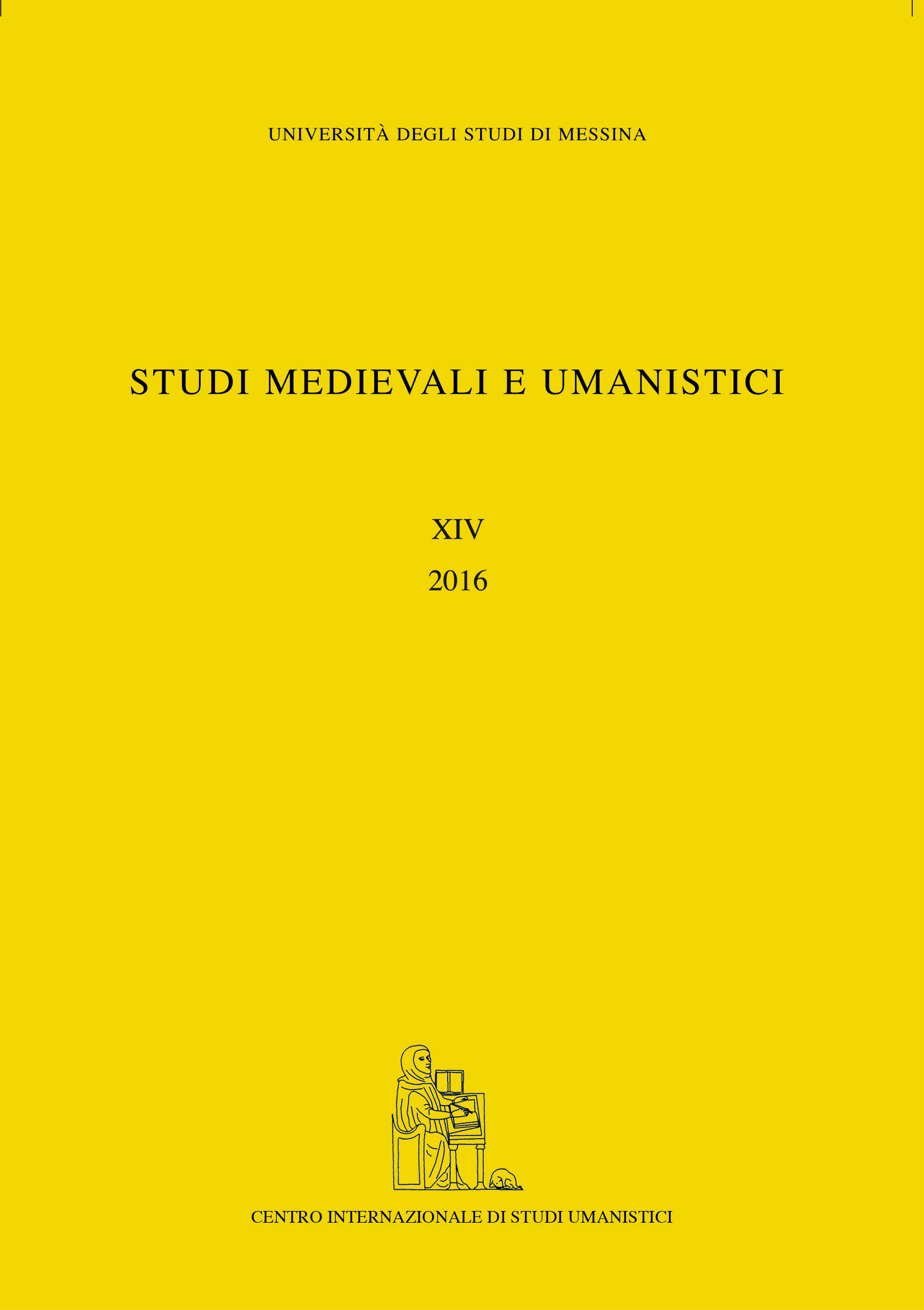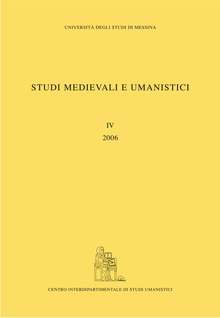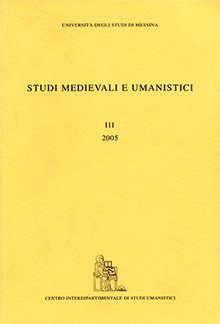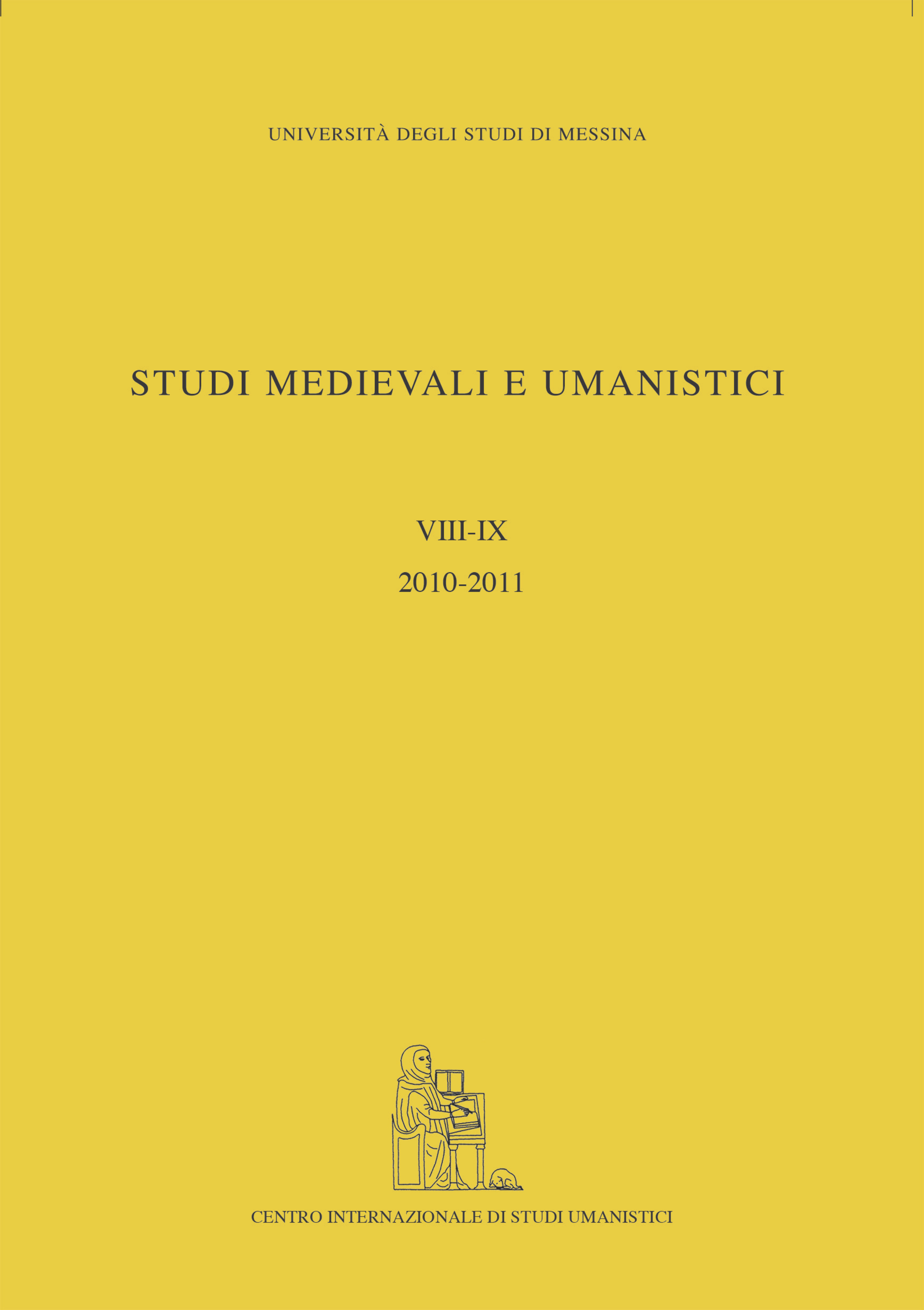Studi medievali e umanistici, XVII
€ 80,00
Descrizione
XVII (2019)
Messina, Centro Internazionale di Studi Umanistici, 2019, 350 pp.; 25 cm.
ISSN 2035-3774
SOMMARIO
Giovanni Cascio, Ferreto Ferreti e Albertino Mussato in morte di Benvenuto Campesani
Monica Berté, Le postille apografe di Petrarca a Svetonio nel Par. lat. 5808
Paola De Capua, Magnificenza estense. Giovanni Toscanella e le nozze di Leonello d’Este con Maria d’Aragona
Rossella Bianchi, Poesia umanistica a Ferrara: Daniele Fini tra autobiografia e cronaca
Valerio Sanzotta, Per Ficino e Filone d’Alessandria
Aurelio Malandrino, Bartolomeo Gamba e un’inedita silloge di lettere petrarchesche volgarizzate. Con l’edizione della Dispersa 27
Daniela Gionta, «A lume di lanterna piccolina». La lezione etica e civile di Carlo Dionisotti
TESSERE
M. Bandini, Diodoro Siculo alla scuola di Manuele Crisolora
A. Rollo, Chrysolorina IV
C. Gazzini, Spigolature vaticane: nuovi testimoni degli Erotemata di Crisolora
P. Megna, Poliziano tra Giovenale e Sinesio: gli excerpta del ms. BNCF II I 99
Indice dei manoscritti e delle fonti d’archivio
Indice dei nomi
ABSTRACT
GIOVANNI CASCIO, Ferreto Ferreti e Albertino Mussato in morte di Benvenuto Campesani
The article deals with a collection of Latin poems concerning the death of Benvenuto Campesani, traditionally attributed to the poet and historian from Vicenza, Ferreto Ferreti. The author, on the basis of new manuscript evidence and through an overall reassessment of the structure of the corpus and the contents of the individual poems, demonstrates that five of the six items must be assigned to the famous tragedian Albertino Mussato. As a consequence of this reconstruction, the collection is revealed to be a correspondence in verse between these two leading figures of early 14 th c. Italian literature.
MONICA BERTÉ, Le postille apografe di Petrarca a Svetonio nel Par. lat. 5808
The paper focuses on a copy, Par. lat. 5808, from a manuscript owned and annotated by Petrarch. In particular, the new apograph partially transmits the marginalia from the Oxford manuscript, Exeter College, 186, containing Suetonius’ De vita Caesarum and Ausonius’ Monosticha. Through an examination of this Parisian manuscript the A. identifies the copyist as well as date and place of the transcription, which probably occurred while Petrarch was still alive and with his approval. In addition, the article publishes all of the marginal notes which are transmitted in Petrarch’s original which is now mutilated, although it is not possible to establish with certainty the occurring of every annotations in the autograph manuscript.
PAOLA DE CAPUA, Magnificenza estense. Giovanni Toscanella e le nozze di Leonello d’Este con Maria d’Aragona
The paper illustrates a hitherto unpublished and almost unknown testimony of the long and opulent feasts for the wedding of Leonello d’Este and Maria d’Aragona, celebrated in Ferrara in April 1444: it’s a letter from the humanist Giovanni Toscanella, then secretary of Borso, to the best known friend Giovanni Aurispa, which sheds new light on the historical, artistic and cultural aspects of life at the Este court. In the Appendix, Toscanella’s letter is critically edited and translated into Italian.
ROSSELLA BIANCHI, Poesia umanistica a Ferrara: Daniele Fini tra autobiografia e cronaca
By editing and illustrating a selection of poems by the Ferrara humanist Daniele Fini, who collected them together with those of his friends in the autograph workbook Ferrara BCA cl. I 437 (of which the A. has already provided a detailed description in SMU 16, 2018, 169-206), the article highlights the typology of contents, forms and aims of Fini’s poetic production. It also adds new elements to the author’s biography and constitutes a useful contribution to the cultural environment in which he worked, as well as to some episodes in the history of Ferrara during the first half of the sixteenth century.
VALERIO SANZOTTA, PER Ficino e Filone d’Alessandria
Philo of Alexandria plays a central role in the Renaissance attempt at conciliating Platonic philosophy and the Bible. After a survey of Philo’s manuscript tradition, this paper particularly focuses on Marsilio Ficino, who made a large use of Philo, especially in his Compendium in Timeum, where he inserted two long quotations from De opificio mundi and De plantatione. Ficino aimed specifically at underlining the consonance of the cosmology in Plato’s Timaeus with the biblical account. Moreover, the textual features of both quotations allow us to identify the manuscript used by Ficino, now in the Laurenziana Library of Florence. Brought to Italy from Constantinople in 1427 by Francesco Filelfo, who sold it to Lorenzo de’ Medici before 1481, Philo’s codex was consulted by Ficino in Lorenzo’s private library, where also Poliziano, who left some marginal notes, might have had access on it.
AURELIO MALANDRINO, Bartolomeo Gamba e un’inedita silloge di lettere petrarchesche volgarizzate. Con l’edizione della Dispersa 27
The article deals with the manuscript It. XI 197 (= 7600), held by the Marciana Library (Venice). The codex is written by the 19 th century scholar Bartolomeo Gamba and consists in the draft of a miscellany of Italian translations from Petrarch’s Lettere disperse. After describing the manuscript, the paper focuses on the Latin text of the Disp. 27 (= Var. 26) and compares it with the unpublished translation by Giovanni Antonio Moschini, which is included in the codex, and with the one made by Giuseppe Fracassetti. In the Appendix, an unknown Gamba’s letter to Domenico Rossetti is edited.
DANIELA GIONTA, «A lume di lanterna piccolina». La lezione etica e civile di Carlo Dionisotti
This article highlights the content and the context of the commemoration for Don Giuseppe De Luca, written by Carlo Dionisotti in 1962. Published in three different versions over the years, this text played a pivotal role in Dionisotti’s literary, political and civil vision: in 1967, he even planned to include it, as the final essay, in his most prominent collection, Geografia e storia della letteratura italiana. An Appendix contains the first version, published on the Vatican newspaper «L’Osservatore Romano» (16-17 April 1962).
M. BANDINI, Diodoro Siculo alla scuola di Manuele Crisolora
This paper places a new manuscript, Vat. gr. 996 of Diodorus Siculus, among the Greek manuscripts brought by Manuel Chrysoloras to Florence in 1397. It also suggests the attribution of Laur. 70, 16 and other manuscripts to Roberto de’ Rossi, one of the first Italian pupils of Chrysoloras.
A. ROLLO, Chrysolorina IV
This article provides a description of new manuscripts of Chrysoloras’ Erotemata and discusses some readings of the critical edition of this grammar’s original text, confirming or correcting them.
C. GAZZINI, Spigolature vaticane: nuovi testimoni degli Erotemata di Crisolora
This contribution presents four documents of the Apostolic Vatican Library, which are relevant to the history of the transmission and reception of Manuel Chrysoloras’ Erotemata. So far unknown and described here for the first time, the fifteenth-century manuscripts Vat. gr. 2145 and 2267 are two witnesses to the compendium of Chrysoloras’ grammar. The two factitious codices Vat. gr. 2300 and 2275, by contrast, preserve hitherto unknown evidence for yet other versions: the former a new autograph fragmentary copy of the Erotemata’s abridged redaction by Sozomenus of Pistoia, and the latter a previously unrecognized rewriting of Chrysoloras’ grammar, which is here attributed to Ambrogio Traversari.
P. MEGNA, Poliziano tra Giovenale e Sinesio: gli excerpta del ms. BNCF II I 99
This paper shows how Angelo Poliziano was the first to identify a locus parallelus from Synesius’ correspondence (Ep. 5) in his exegesis of Iuv. 13, 162-63, but his intuition remained unknown until the XIX th century. It also focuses on Poliziano’s excerpta from Synesius’ works in the ms. BNCF II I 99 and on its manuscript sources, thus enlightening some aspects of Synesius’ reception in the XVth century.
